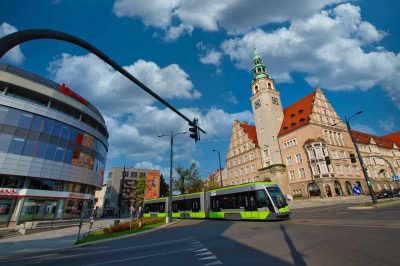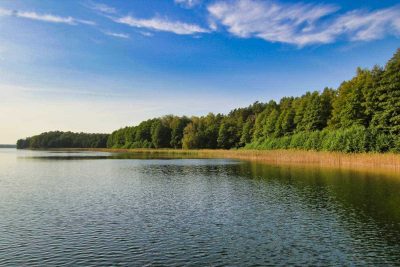Warmia and Mazury is a fascinating Polish region. We have already presented the most beautiful sights in a separate article. In this article we will go to Olsztyn, the capital of the Warmia and Mazury Voivodeship. In the former Allenstein, which belonged to Germany until the end of the Second World War, you can still feel much of the German past. However, in the last years a lot has changed here. While Olsztyn was previously little known as a simple provincial town even in Poland, the city has spruced itself up in recent years and experienced a small boom. Nestled in the Warmia Lakeland, you will not only find hip cafés, restaurants and bars in Olsztyn, but also a whole range of renovated historical sights.
Top 10 Olsztyn sights – What you must have seen in Olsztyn
Olsztyn is Poland’s northeasternmost capital of a voivodeship. Olsztyn’s sights are mainly influenced by the centuries of German rule.
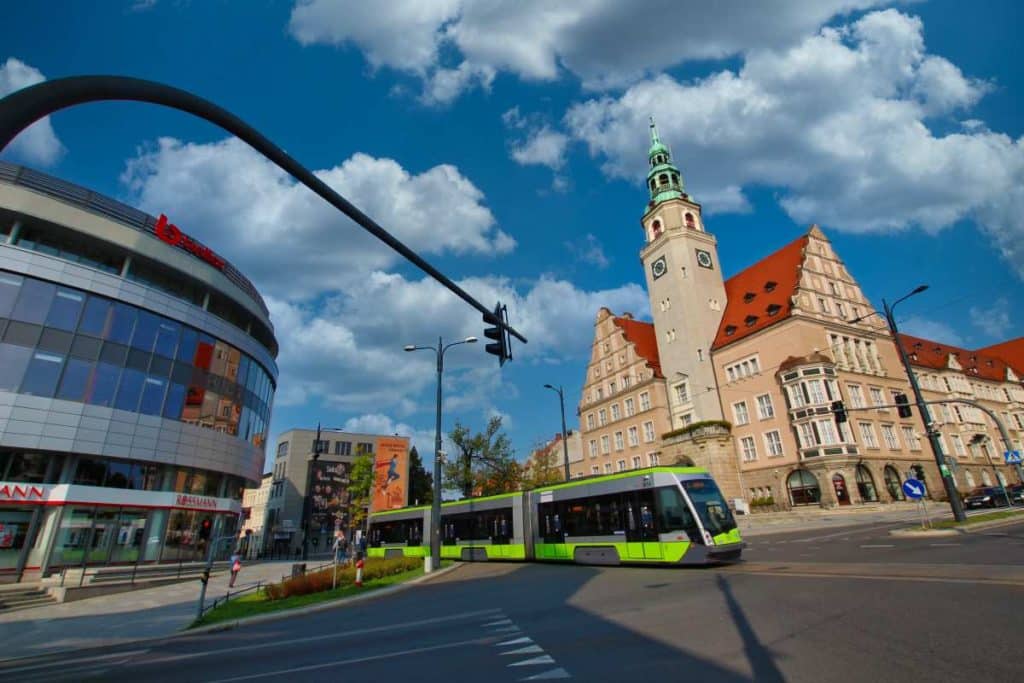
Town hall
When the city grew more and more at the beginning of the 20th century because of the new railroad line, it expanded mainly in western and eastern direction. The town grew out of the historical center and a new center was built east of the medieval town. Here, between 1912 and 1916, on the remains of an old cemetery, a new town hall was built in the style of the Dutch Renaissance, which is one of the most beautiful in all of northern Poland. This is remarkable since not far from Olsztyn there was fighting during the First World War.
Sandstone reliefs
On the east side, the town hall has five sandstone reliefs created by the Berlin sculptor Max Krause. They symbolize the virtues of wisdom, beauty, justice, diligence and strength. The portal above the main entrance shows a depiction of St. James, the city saint, who also adorns the coat of arms of Olsztyn. The oriels are decorated with representations of the four elements.
Filigree tower
Especially beautiful to look at is the high town hall tower, from which a carillon with the Warmia anthem (“O Warmio moja miła” – “Oh you my dear Warmia”) has been ringing since 22 January 1969 (anniversary of the conquest of the city by the Red Army). The volute gables give the tower an impressive frame. The council hall with its frescoes is also worth a look, but is usually not open to the public.
Best view of Olsztyn
However, the most beautiful place in the town hall is on the top floor accessible to visitors. Here you can enjoy the unobstructed view of the old town through a small window. From here you have without a doubt the best view of Olsztyn.
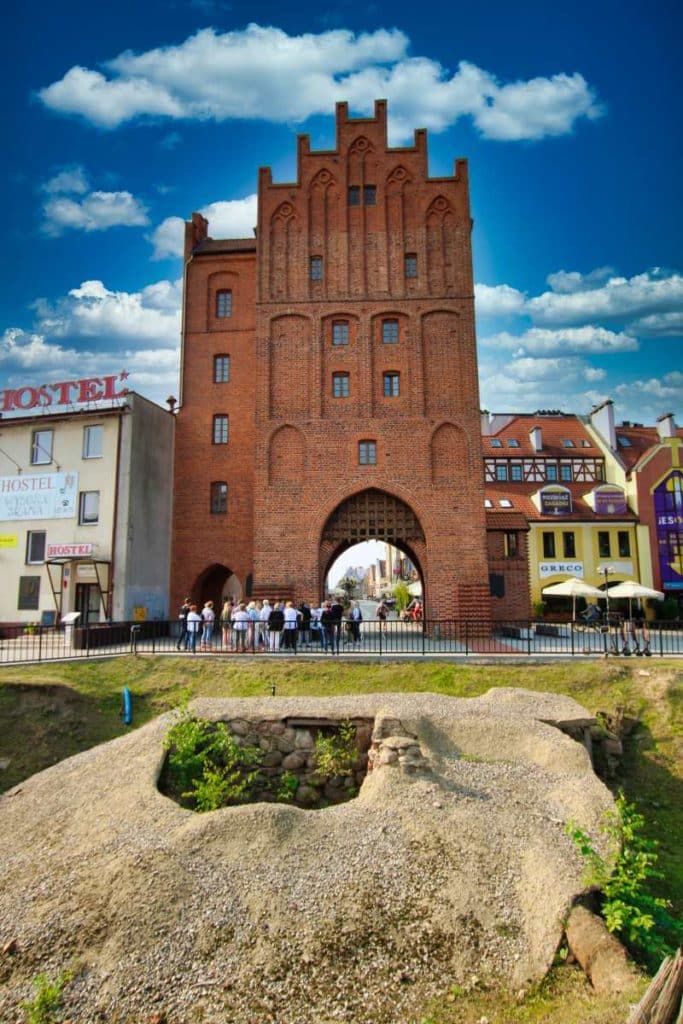
High Gate
The massive building, also known as Upper Gate, marks the entrance to the old town and is part of the town fortifications from the late Middle Ages. In the past, three gates formed the entrance to the city, but only this one has been preserved. If you stand in front of the gate, you can still see a restored part of the old city wall on the right, where flying merchants offer antiques and more when the weather is good. In the 19th century the gate was used as a prison.
A famous prisoner
Among others, Wojciech Kętrzyński was imprisoned here. The historian, born as Adalbert von Winkler, was director of the Lviv Ossolineum and thus one of the most influential Polish intellectuals of the time. He had been sentenced for procuring weapons against the rulers in the Russian partition area during the January Uprising. He also became famous for his scientific research into old Masurian and Warmian folk songs.
Controversial construction site
Right in front of the High Gate there are still remains of another building, as you can see on the photo. They were discovered only a few years ago, when a new house was planned to be built here. The building was part of the city fortification and is in good condition. However, there is still disagreement about what exactly should be done with it and for years the walls have remained in a kind of limbo. This even leads to the situation that a birch tree that is growing here right now cannot be removed because archaeologists and the city administration are arguing about the jurisdiction over the terrain.
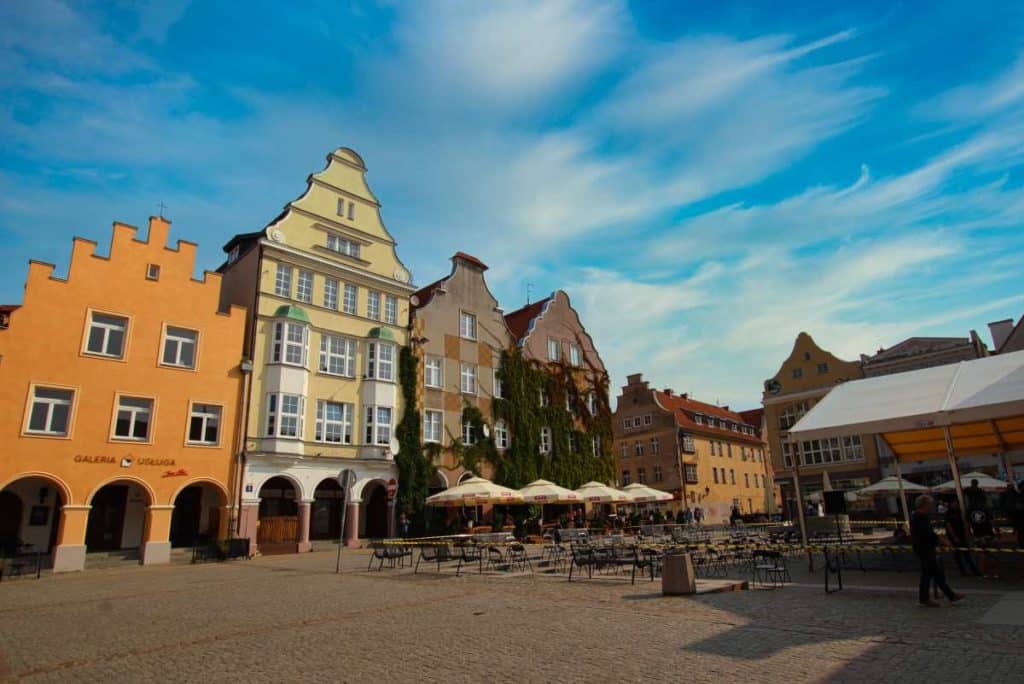
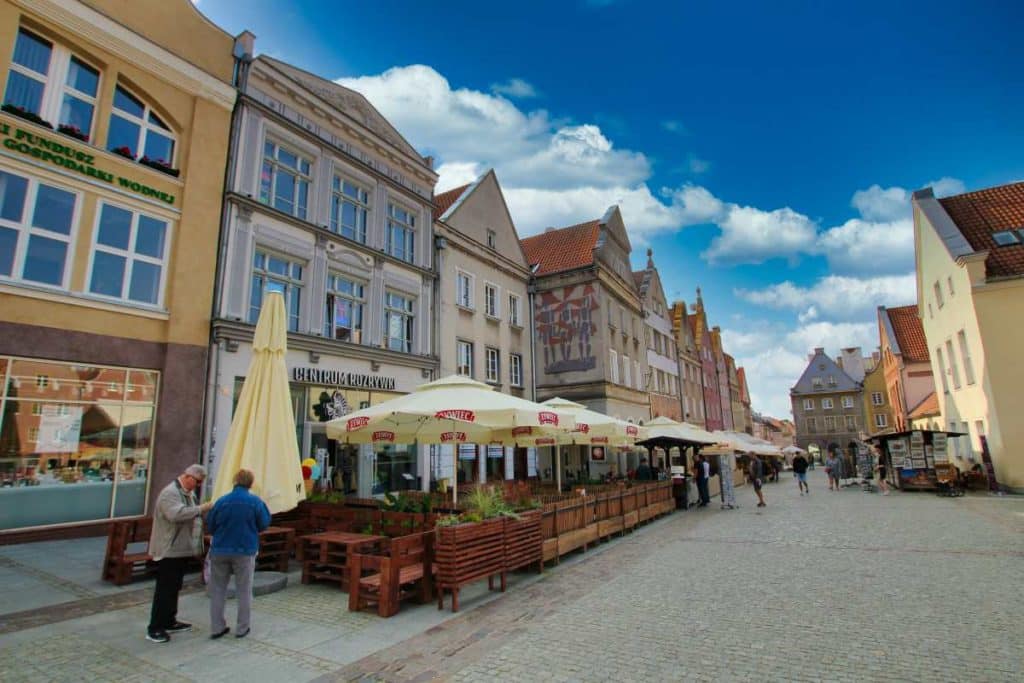
Old Town Market
The Market Square, officially known as the Old Town Street (ul. Stare Miasto), is the heart of the Old Town. Trade was conducted here since the 14th century. Only 100 years ago it had a completely different shape than today, among other things because a streetcar line ran here. At the end of the Second World War, most of the buildings on the square were destroyed by the Red Army, partly in the course of hostilities and partly by arson. In the 1950s, the reconstruction of the marketplace was carried out in a pseudo-historical style, using mainly neo-baroque and neo-naissance elements. Some of them were decorated with sgraffiti showing historical scenes.
Birthplace of Erich Mendelsohn
The architect Erich Mendelsohn was born at the corner house of św. Barbary, by the way, and spent his childhood in this building. Olsztyn has always remained the home of the famous architect, who designed the Schocken department store, a prime example of Chemnitz Modernism. Today you can relax wonderfully on the market square. In the buildings that were built after the war and in the neighboring streets there are many cafes, restaurants and clubs as well as some art galleries.
Old city hall in new splendor
If Olsztyn has a New Town Hall, then of course an Old Town Hall should not be missing. The brick building stands in the middle of the market square and parts of it are still original from the 14th century. However, the facade of the Old Town Hall dates back to the 19th century. When the New City Hall was already in use, the Old City Hall was rebuilt again and received its present form in the 1920s. Since the 1950s, it has been home to the municipal library, so that the building is now available to everyone. Among other things, the Old City Hall served as the location for the series Stawka większa niż życie (marketed in the West as “More than life at stake”). It deals with the life of a Polish secret agent during the Second World War and is one of the most popular Polish series ever.
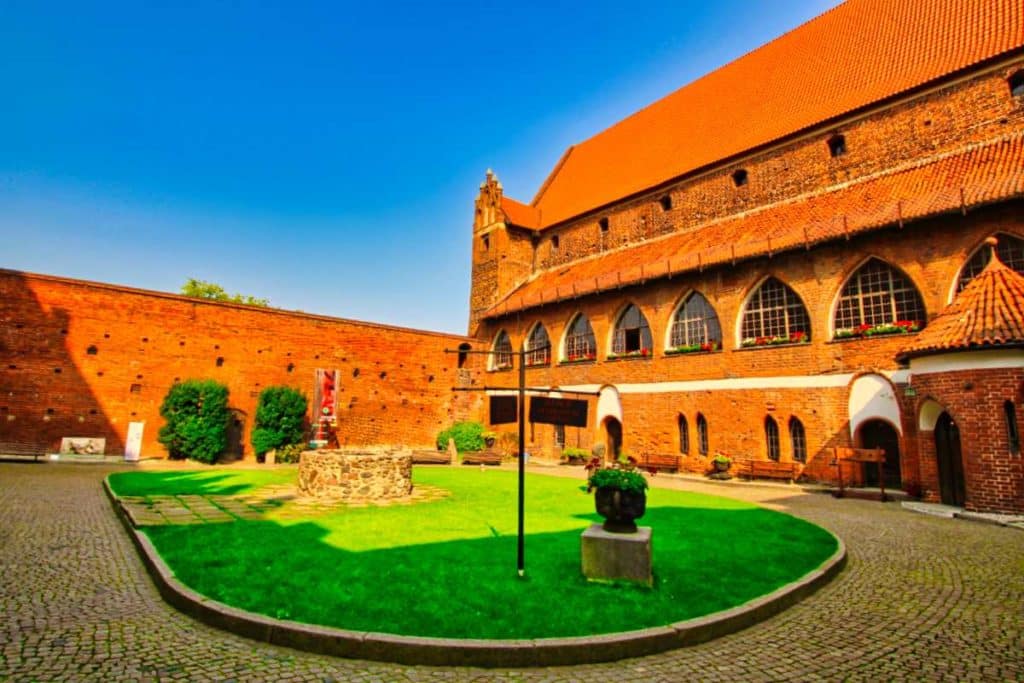

Olsztyn castle
Warmia is rich in castles and palaces. However, none of the castles is as well preserved as that of Olsztyn, which was built in the middle of the 14th century as the seat of the Chamber Office of the Warmian Cathedral Chapter. Both the residential and representative rooms have been preserved and today they house an exhibition on the history of the town, many historical paintings.
Copernicus – the most famous inhabitant of Olsztyn Castle
In the rooms with beautiful vaults there is a lot of space especially for Copernicus, the most famous inhabitant of the castle. Copernicus lived and worked in this Castle from 1516 to 1521, when he was the steward of the cathedral chapter. Of particular interest are the carvings that Copernicus made on a wall on the upper floor to perform astronomical calculations. Paper was precious in those days. But the “German” Allenstein in the period up to the Second World War is also a theme in the Castle. Changing exhibitions of modern art take place in the storerooms under the roof.
Mysterious stone statues
A special feature are the so called “baby” in the inner courtyard of the Castle. In former times, before the arrival of the Teutonic Order in the region, the pagan Prussians (Old Prussians) settled here. Unfortunately, little is known about them and the baby, steles with human faces that may have served cultic purposes, are among the few material remains of that lost culture.
amphitheater
In front of Olsztyn Castle there is a huge amphitheater, which in summer is certainly the most beautiful event stage in all of Olsztyn. With up to 1250 spectators you can enjoy concerts and theater performances here with a view of the castle. When the sun goes down behind the castle, it is one of the most magical places in Olsztyn.
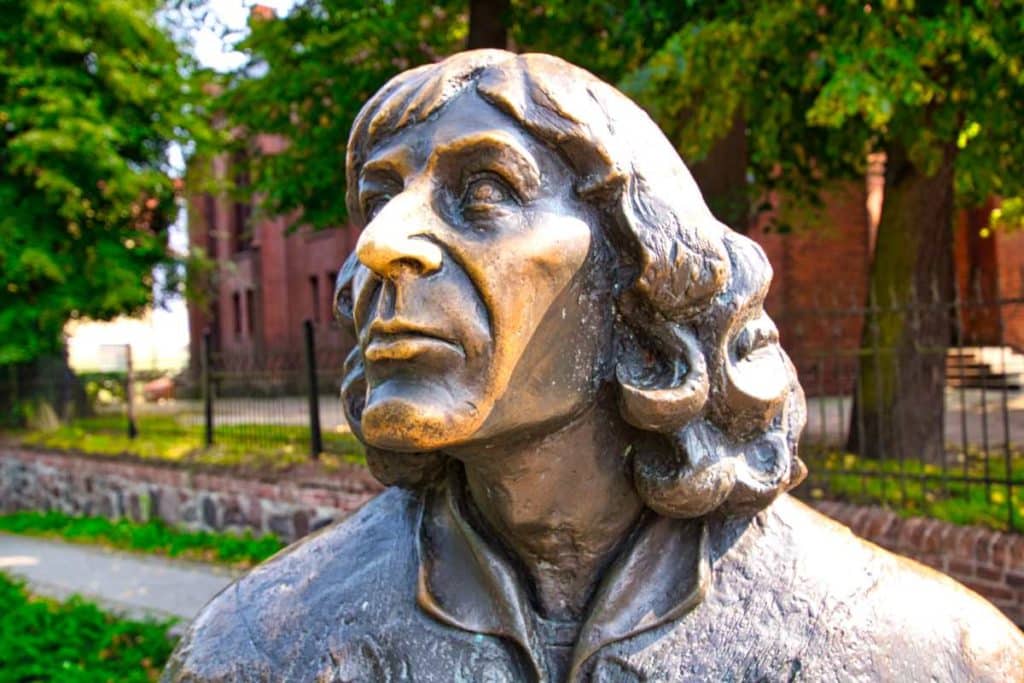
Copernicus Monument
In front of the castle entrance sits a thoughtful bronze Copernicus, looking half at the castle and half in the sky. He is one of the most popular photo motifs in the city and will be happy to make a selfie with you.
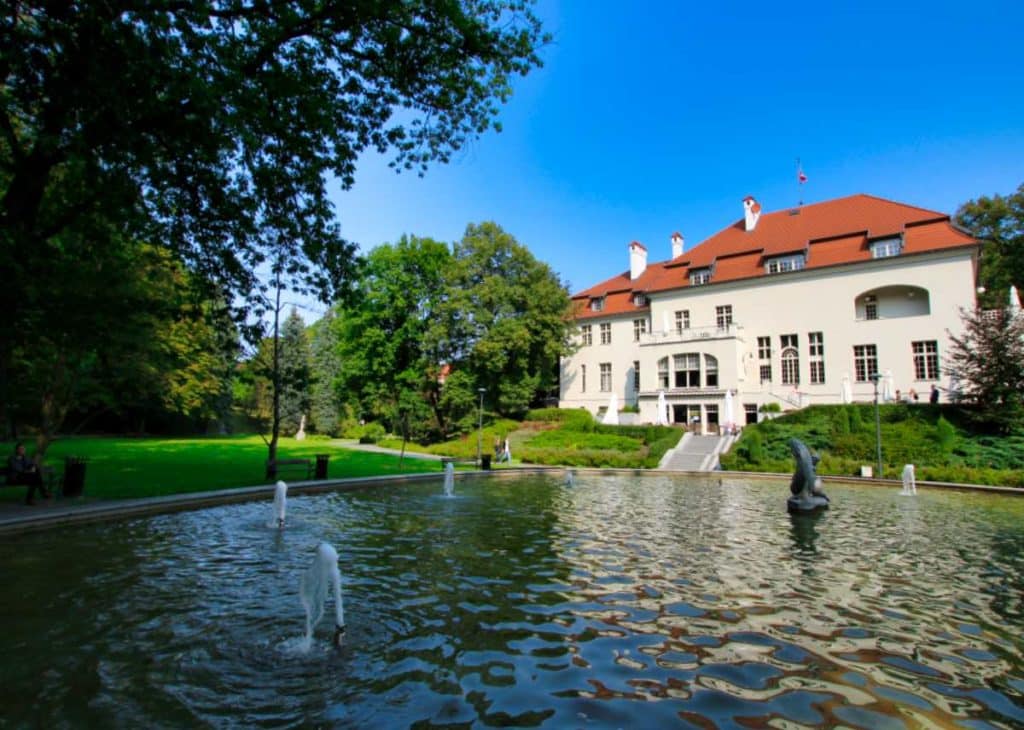
Castle Park
After so much art and culture, a trip to the countryside is just the thing. You don’t have to go far for that, because directly next to the castle at the river Łyna is a large, well-kept park with fountains, several sculptures and walking paths, where you can relax wonderfully. Especially beautiful is the Villa Casablanca (1912/1913), a former officers’ mess, which now houses a restaurant.

Fish Market
The fish market is certainly not as beautiful as the old town market, but it is architecturally very interesting. In the last years some modern buildings were built here, which should remind of the original construction of the market. Whether this has really succeeded, you have to decide for yourself after a look at the photo. The brick building on the right is the house of the Gazeta Olsztyńska, a newspaper, and today houses an exciting exhibition with historical city views and several temporary exhibitions. The fish market is especially beautiful in summer, when concerts are held here almost every day.
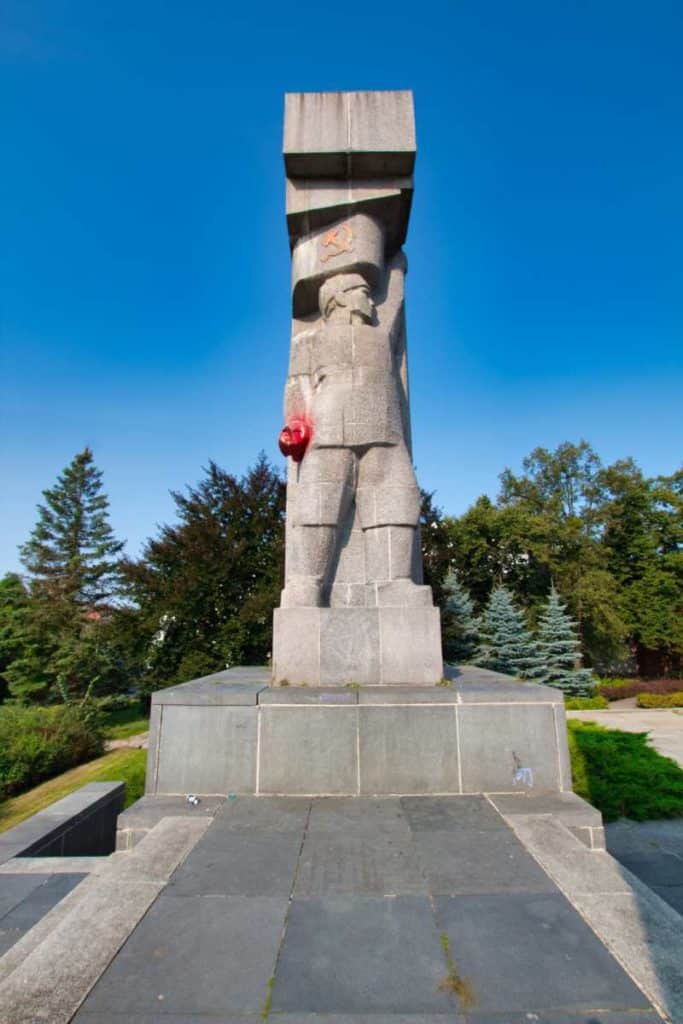
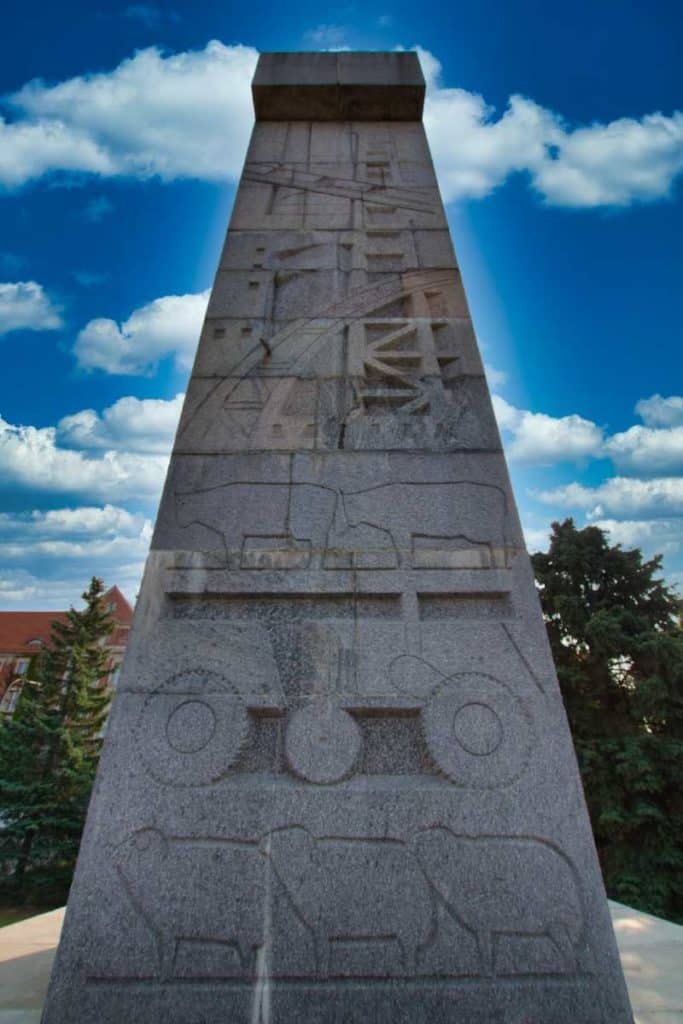
Liberation Monument
The “Monument to the Liberation of the Warmian and Masurian Lands” used to be officially called “Monument of Gratitude for the Red Army”. The people of Olsztyn, however, have chosen their own name and often only disparagingly refer to it as “gallows”. This says a lot about the appreciation of the Soviet troops in Poland. It consists of two pylons, which are supposed to symbolize an open triumphal arch. It was designed in 1954 by Xawery Dunikowski, an Auschwitz survivor, who created numerous monuments and sculptures for the new regime. Interesting detail: The remains of the Tannenberg Memorial, where Hitler had the deceased Reich President Paul von Hindenburg buried not far from Olsztyn, were used for the construction.
Controversy about the monument
Heroic depictions of Red Army soldiers, tanks and life under socialism are on display. After the end of communist rule in Poland it was to be destroyed as a “symbol of the hated and bloody Soviet terror”, as some politicians demanded. Fortunately it still stands, as it is one of the few remnants from that time in this region.
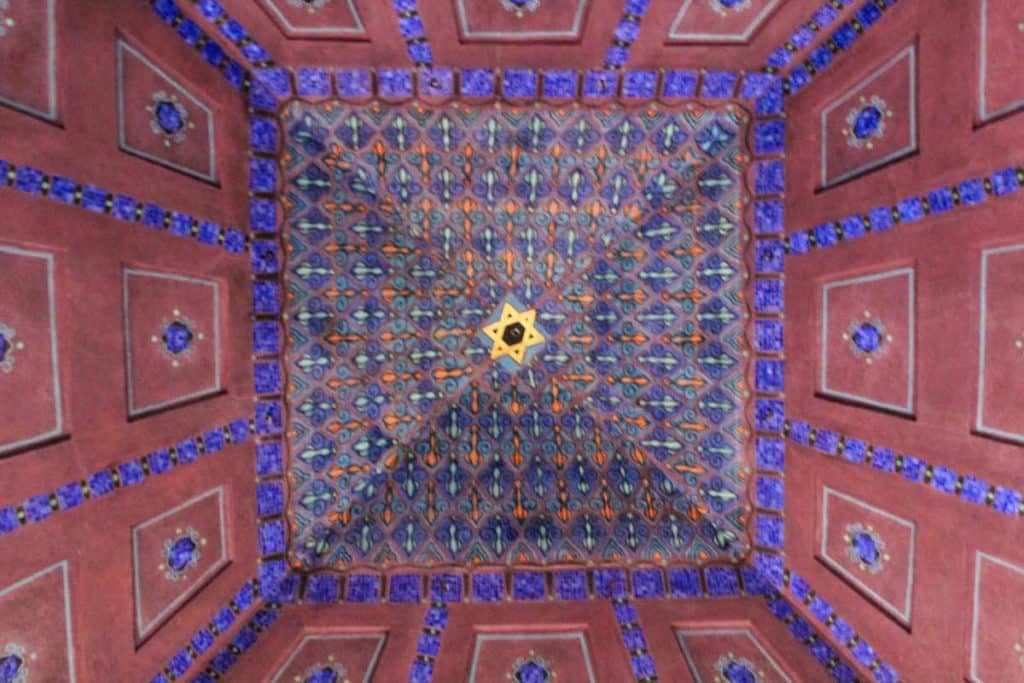
Jewish funeral home
The Jewish Funeral Home was the first building designed by Erich Mendelsohn. There used to be a large Jewish community in Olsztyn, which maintained a cemetery here on the edge of the old town. After the deportation and murder, the burial house served as an archive for the Jewish community and fell into disrepair after the end of communist rule. In the 2000s it was acquired by the cultural society Borussia. This society has its headquarters in the neighboring building and also gives you the keys to the burial house. The funeral house is worth seeing because of its beautiful ceiling. Mendelsohn was inspired here by the Blue Rider. The world-famous architect cultivated intensive connections to the group of artists. Today you can view a small exhibition on Mendelsohn on the upper floor.
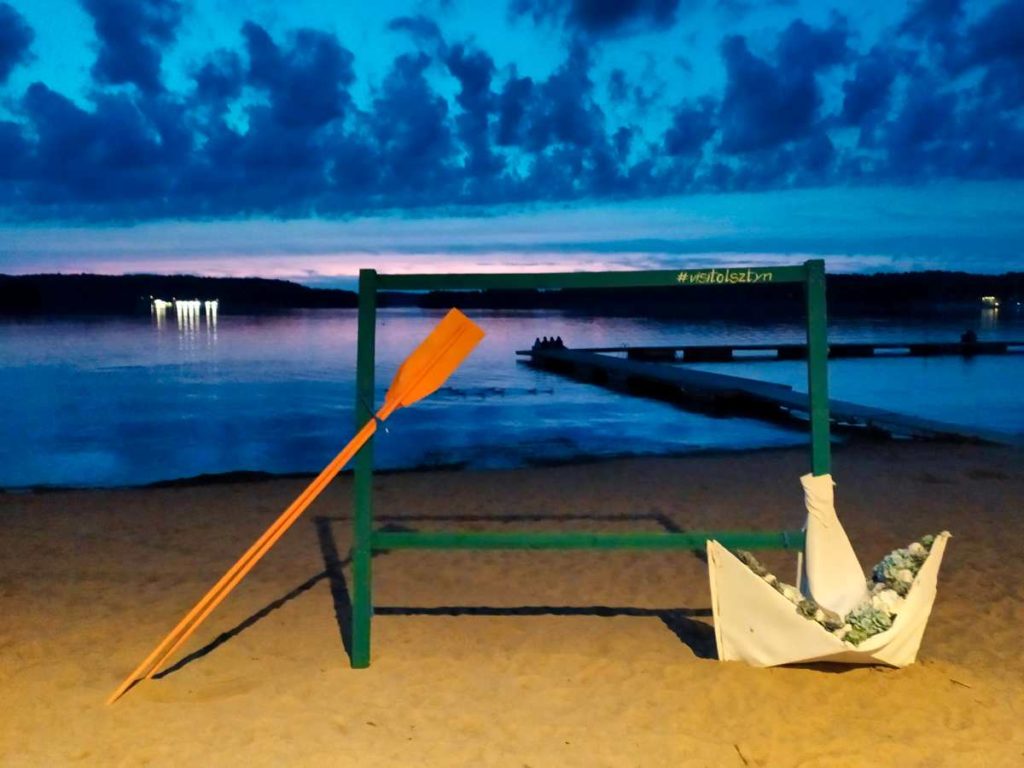
Beach at Lake Ukiel
Not only in Masuria there are countless sights, but also in Warmia. And fortunately Olsztyn is situated on several lakes. Especially in the western part of the city the lakes offer a high recreational value. The huge Lake Ukiel is worth a trip all year round. On its eastern side is the city beach, which has been provided with a wide and well-kept promenade. There are a lot of leisure facilities here.
Water activities in Olsztyn
Whether you want to swim, take a trip in a canoe, pedal boat or motorboat, relax with a cocktail at the beach bar or cycle along the promenade – there is always something going on here. Especially in the early evening hours, when the sun slowly sinks behind the lake, the lake is one of, if not the most beautiful place in town.
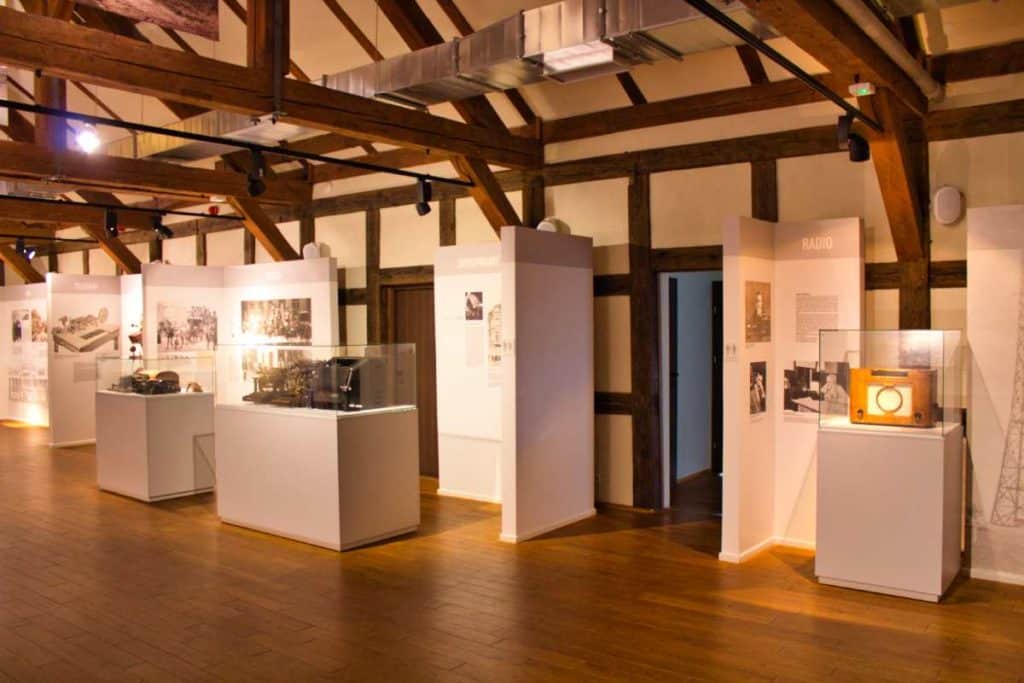
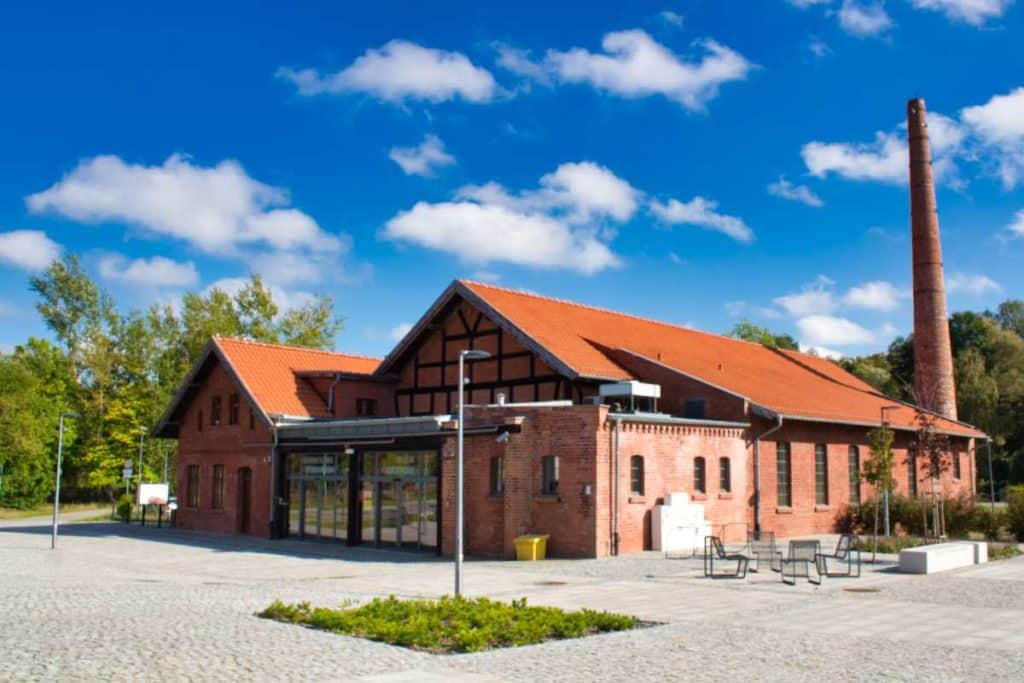
Museum of Modern Art
Behind the interesting name is an exhibition in a former sawmill. It is a modern show on the history of industrial development in Olsztyn and the impact it had on the city at the turn of the 20th century. This will give you an exciting insight into this eventful time when the city was still part of Germany. You will also learn a lot about the region, for example about the construction of the railroad in East Prussia and the building of various canals. The visit is therefore not only worthwhile if you are interested in industrial history.
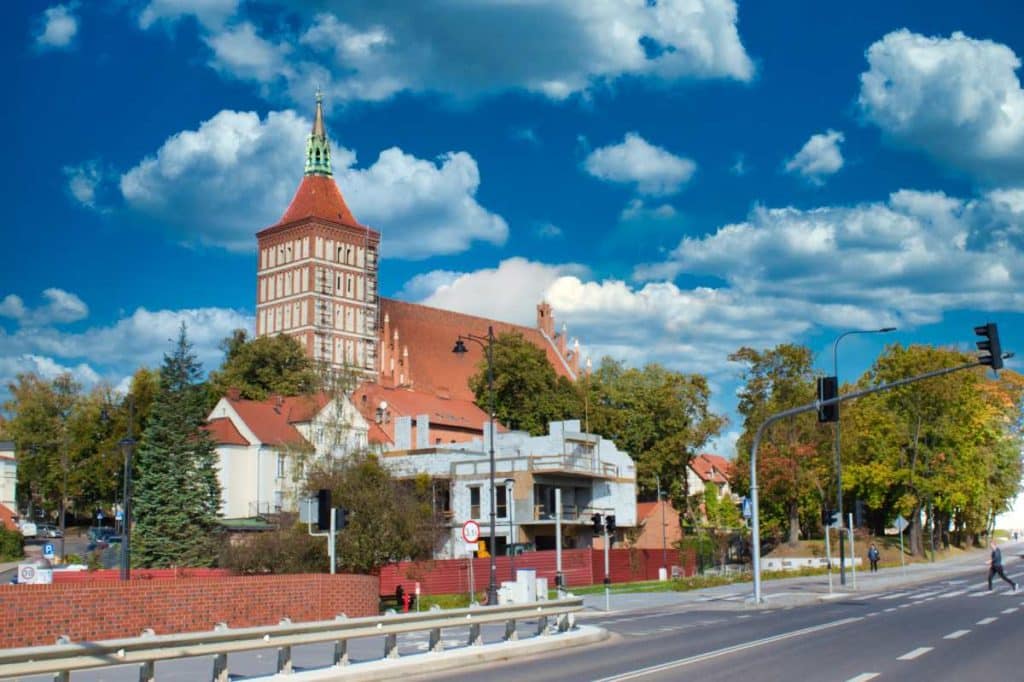
Cathedral of St. James
The massive hall church was built from the 14th century onwards and today serves as the concathedral of the archbishopric of Warmia. Thus, together with the Frombork Cathedral, it is the most important church in the region, at least in administrative terms. Due to wars and lack of money, the construction was delayed until the 16th century. Only then could the three-nave hall church with the remarkable star and cell vaulting be completed in its present form. The massive eight-story tower was also built at that time. Much of the original equipment was lost when Napoleon and his troops took the city.


